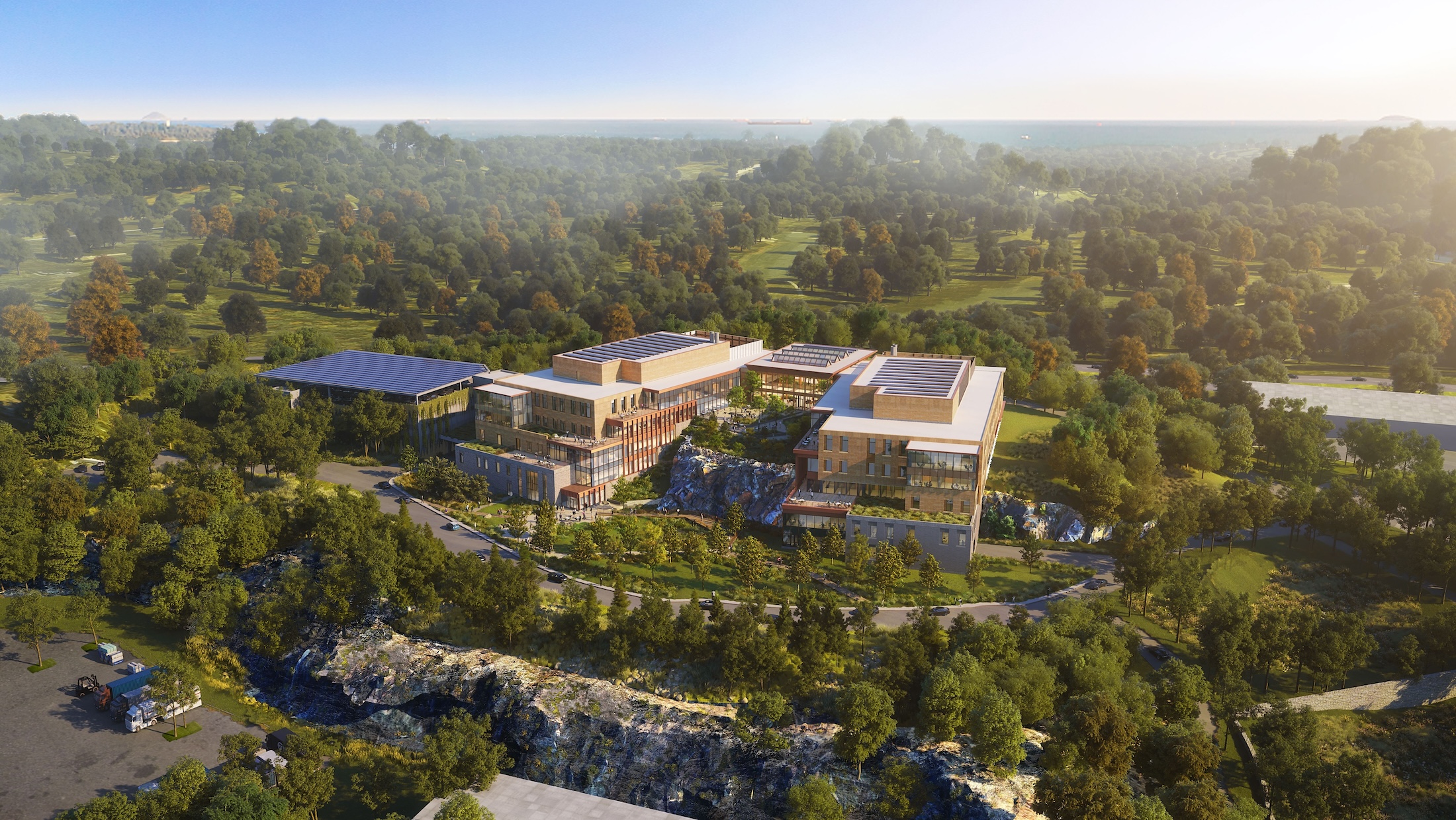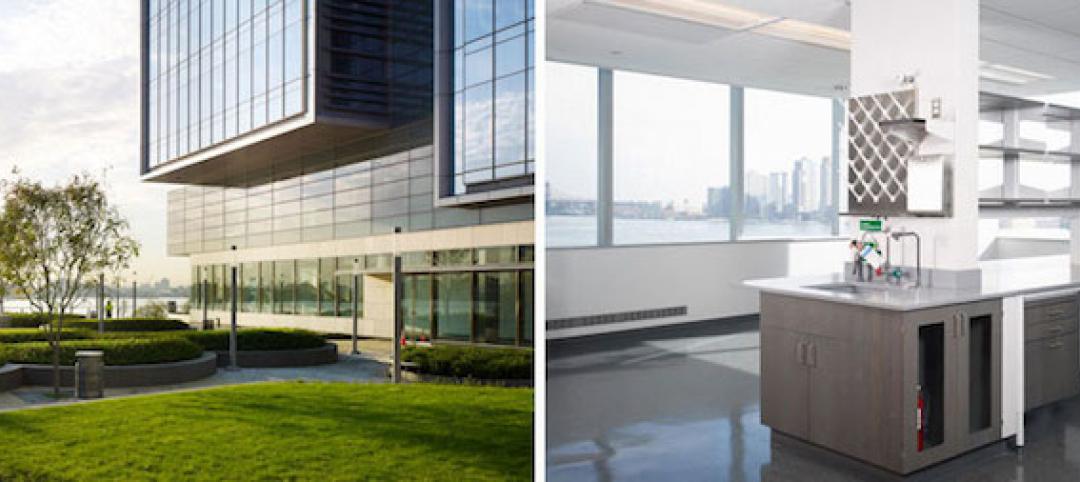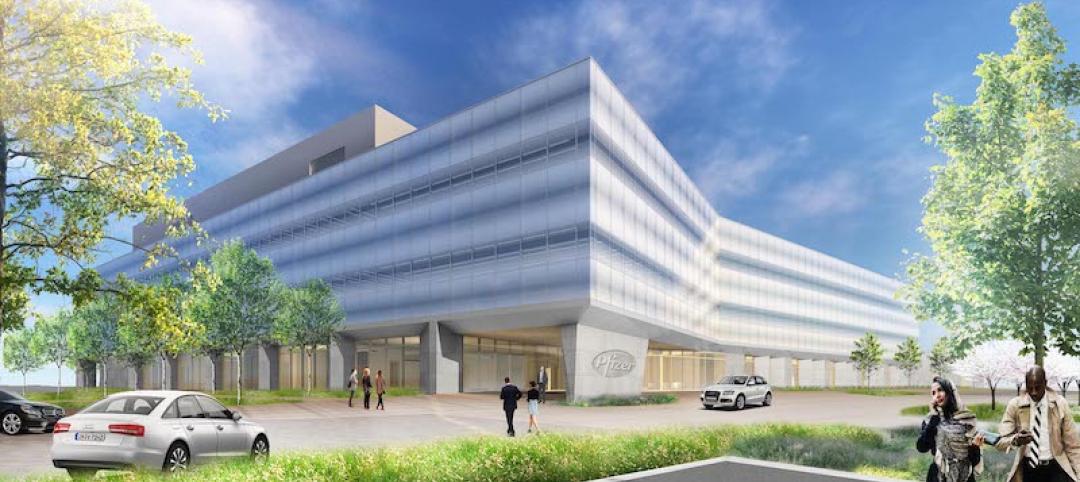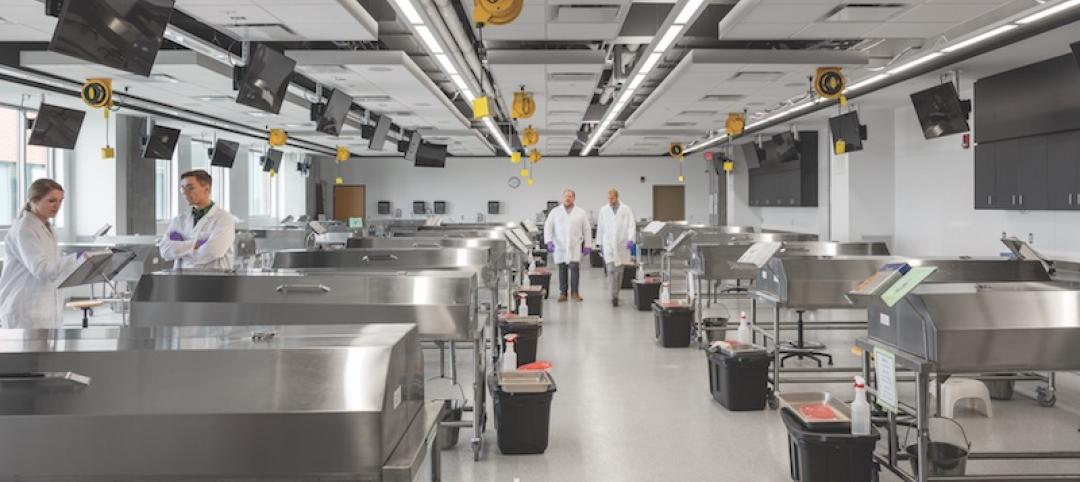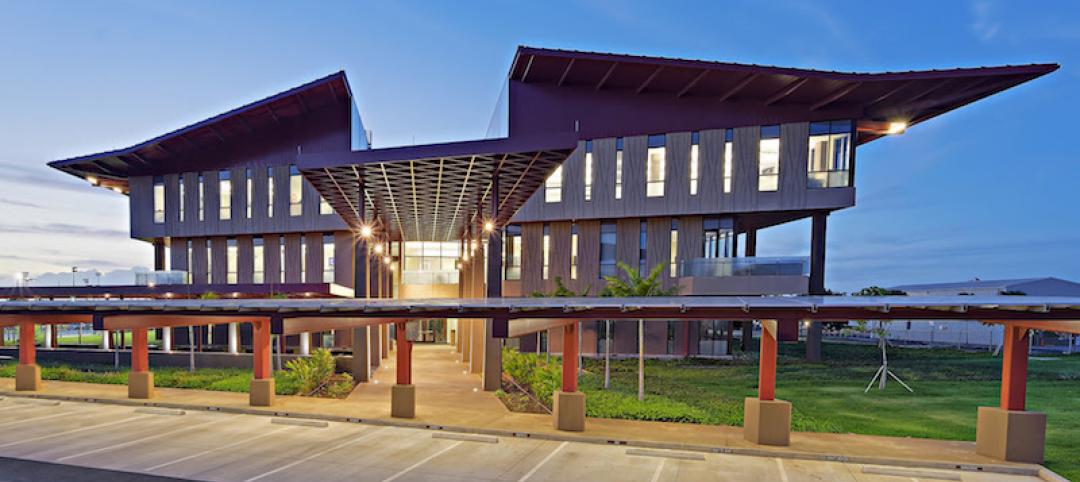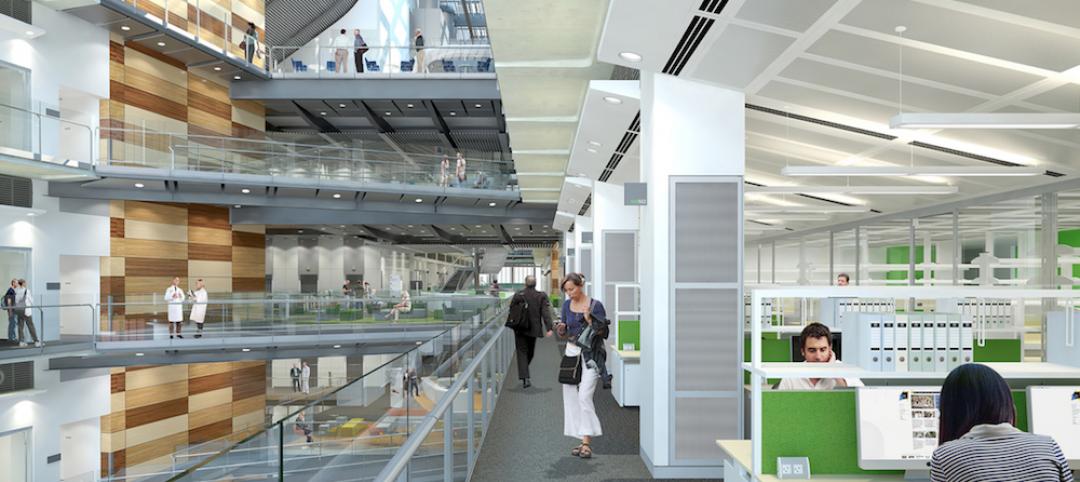In the coastal town of Manchester-by-the-Sea, Mass., an abandoned rock quarry will be transformed into a new research and innovation campus designed by HGA. The campus will reuse and upcycle the granite left onsite.
The project for Cell Signaling Technology (CST), a life sciences technology company, will turn an environmentally depleted site into a net-zero laboratory campus, with building electrification and onsite renewables. The building’s heating, cooling, and hot water will be sourced from geothermal energy. The sustainable campus will target LEED, LEED Zero Carbon, and WELL certifications.
“This is an architect’s dream—to marry our design thinking and holistic approach with CST’s project aspirations while transforming an abandoned quarry into a new campus for life sciences research,” Samir Srouji, principal with HGA, said in a statement.
To support everyday life and employee wellbeing, the design includes a Quarry Garden and Upper Quad designed by landscape architects Studio 2112. These outdoor spaces will connect to a network of trails around the site. A primary circulation route will direct activity from the cloistered Upper Quad, the heart of the campus, to the Quarry Garden, located at the cliff’s base.
The project prioritizes low embodied carbon and healthier materials. Proposed materials include a natural granite base with brick cladding, curtain wall technology with vacuum-insulated glazing, and mass timber structure for the multipurpose lobby pavilion. To foster a thriving natural ecosystem, the project includes native plantings, resilient stormwater management, and a woodland environment.
Sightlines will extend throughout the building, providing natural light and an unobstructed view of the surrounding landscape and the scientists at work. In the flexible open lab environment, robust mechanical, electrical, and plumbing systems will enable the facility to adapt to new technology and instruments in the future.
On the Building Team:
Owner: Cell Signaling Technology
Design architect and architect of record: HGA
MEP and structural engineer: BR+A
General contractor: Columbia
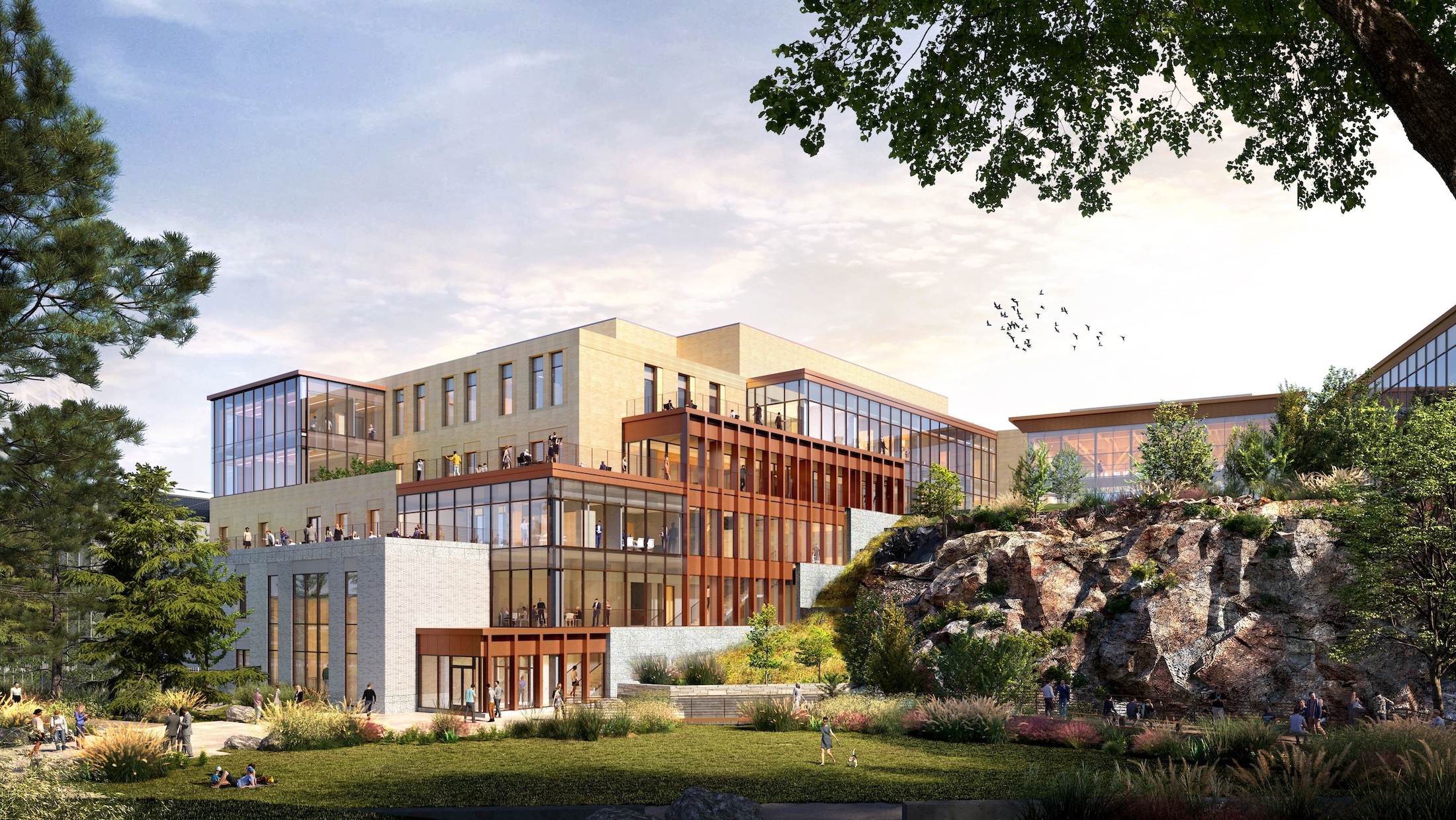
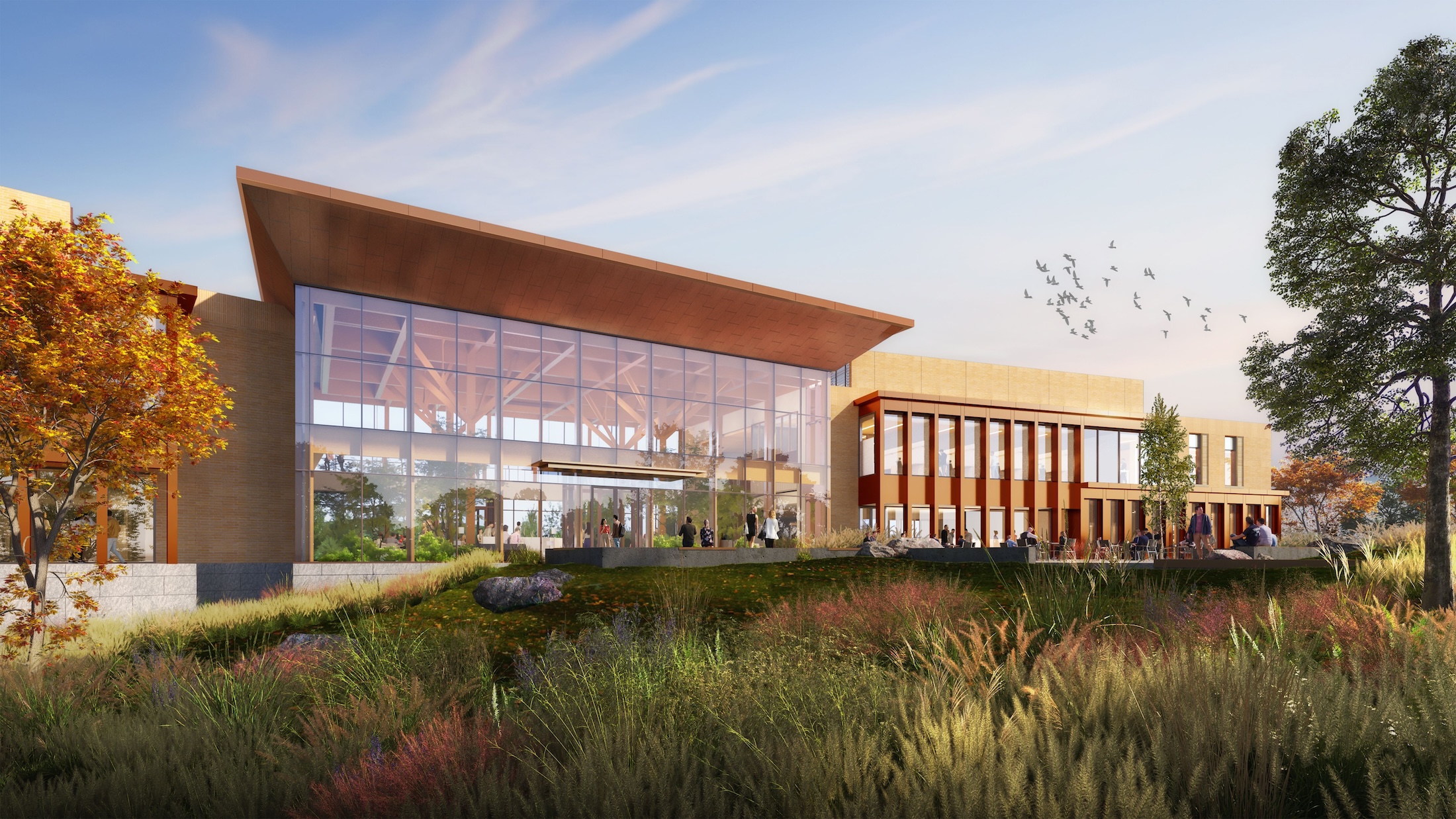
Related Stories
Laboratories | Sep 12, 2017
New York City is positioning itself as a life sciences hub
A new Transwestern report highlights favorable market and regulatory changes.
Laboratories | Aug 3, 2017
Today’s university lab building by the numbers
A three-month study of science facilities conducted by Shepley Bulfinch reveals key findings related to space allocation, size, and cost.
Laboratories | Jul 18, 2017
Pfizer breaks ground on new R&D campus in St. Louis suburb
The facility will consolidate the company’s local workforce, and provide flexible work and research spaces.
Building Team Awards | Jun 12, 2017
The right prescription: University of North Dakota School of Medicine & Health Sciences
Silver Award: North Dakota builds a new medical/health sciences school to train and retain more physicians.
Laboratories | Apr 13, 2017
How to design transformative scientific spaces? Put people first
While most labs are designed to achieve that basic functionality, a transformational lab environment prioritizes a science organization’s most valuable assets: its people.
Laboratories | Sep 26, 2016
Construction has finished on the world’s largest forensic anthropology lab, designed by SmithGroupJJR
The lab’s main purpose will be to help in the investigation, recovery, and accounting of Americans lost in past wars.
Laboratories | Aug 8, 2016
The lab of the future: smaller, flexible, tech-enabled, business focused
A new CBRE report emphasizes the importance of collaboration and standardization in lab design.
Laboratories | Jun 16, 2016
How HOK achieved design consensus for London's Francis Crick Institute
The 980,000-sf, $931 million facility is the result of a unique financing mechanism that brought together three of the U.K.’s heaviest funders of biomedical research—the Medical Research Council, Cancer Research UK, and the Wellcome Trust—and three leading universities—University College London, Imperial College London, and King’s College London.


